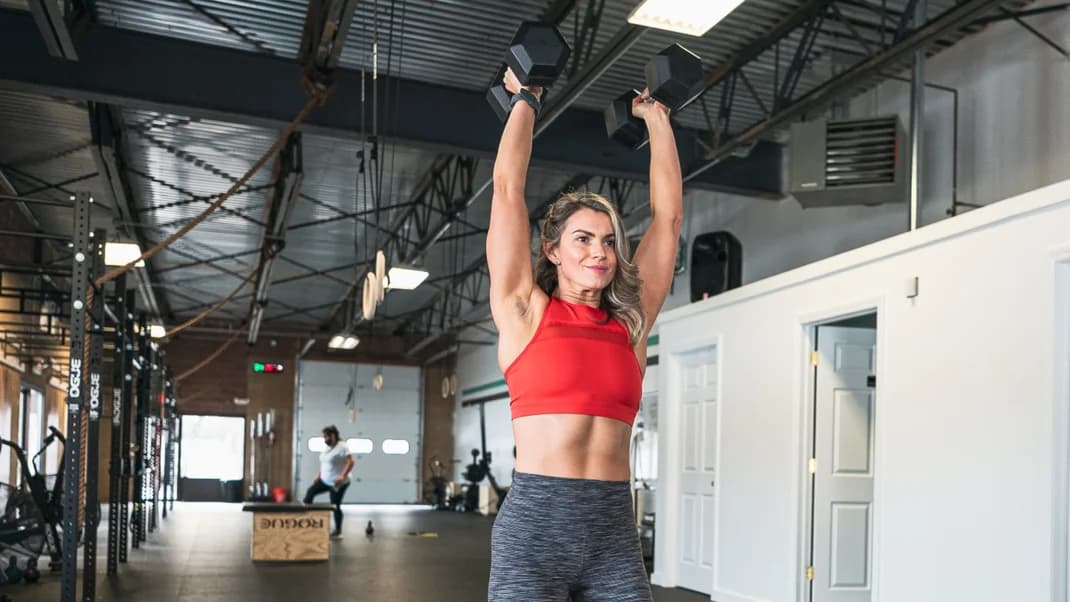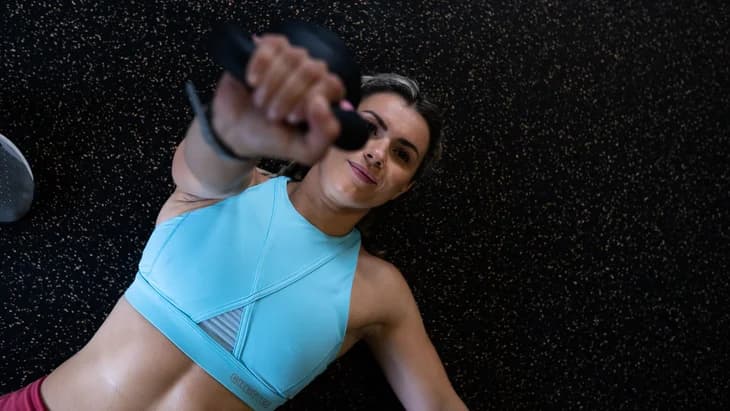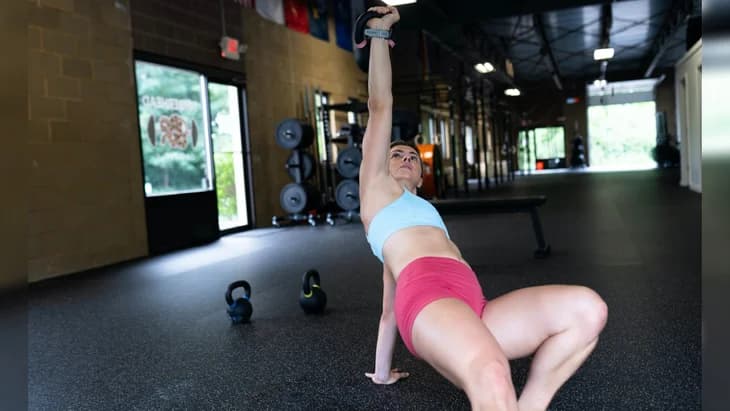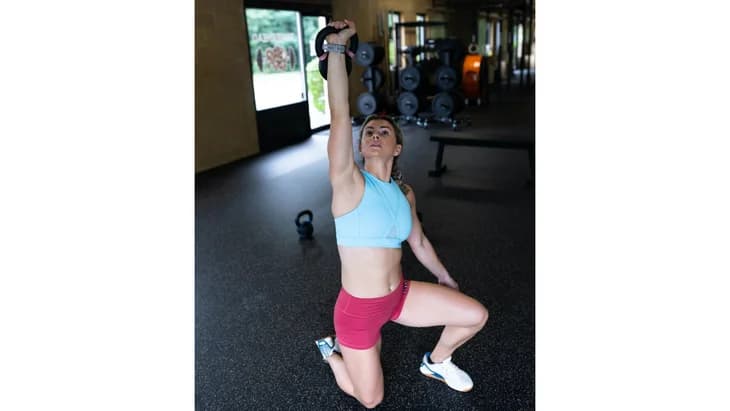Do Your Shoulders Need Mobility or Stability Work?
by Genevieve Singer, Owner and Founder of The Athletes Physical Therapist

I see a lot of shoulder injuries in my line of work. Truth be told, it is probably the most commonly injured joint in clients I work with. Why? The shoulder is notoriously one of the most mobile joints in the body.
Think of the shoulder as a golf ball on a tee. The tee is the shoulder capsule, and the golf ball is the humerus (or upper arm bone). As you might imagine, this creates the possibility for a ton of excessive movement in the joint space simply due to its architecture. Inherently, this excessive movement poses an issue when it comes to stabilizing weight throughout the shoulder’s vast range of motion and especially overhead.
But generally speaking, clients who come in thinking they have a shoulder mobility issue are more often just lacking stability. When you have excessive motion within a joint and don’t actively work to strengthen those end ranges, athletes inevitably run into tendon breakdown and overuse injuries.
Although issues can and do arise in the gym, more times than not, athletes injure themselves in the prolonged positions they occupy throughout the day. If you have a sedentary job and you sit with your shoulders rounded, staring at a computer screen for seven to eight hours per day, for example, you’re going to be predisposed to injury. Your shoulders are resting in a forward position, likely made worse by tight pecs and/or poor scapular activation (mid-back strength).
If you don’t adjust or change this by using a more ergonomic setup, taking standing breaks, etc., no amount of mobility work will ever help you. This article is not meant to take the place of medical advice, but offers some quick diagnostic tools to screen your pain.
Seated Shoulder Mobility Assessment
Try this test to see if you are lacking overhead shoulder mobility:
- Begin sitting with your back against the wall. Your head, upper back and hips should all be in contact with the wall. Your lower spine should be neutral, meaning you don’t need to excessively extend at your low back, or move into an anterior pelvic tilt to obtain contact with the wall.
- Hold a PVC pipe or a broom with your arms fully extended in front of you. Raise your arms up as high as you can overhead using the same grip you would use for an overhead press. Keep your core braced and your ribs from flaring out. Can you get all the way to the wall without your arms bending?
- If yes, turn your palms so that they face the wall (this is an externally rotated shoulder position). Ideally, in this position your arms should end up next to your ears — and this movement should be effortless. If you can do this, congrats! You have good overhead mobility.
Standing Shoulder Mobility Assessment
Another quick test you can use to diagnose your overhead shoulder mobility can be performed while standing. Using a 5-pound dumbbell or plate, abduct your arm over your head (think: make a rainbow). The goal is to touch your bicep behind your ear, with your elbow locked out (arm is completely straight).
If you cannot get through the full range without pain, your arm fully extended, or getting your bicep behind your ear, you have some work to do before safely loading a barbell overhead.
If you passed these tests with flying colors, odds are you don’t have a mobility issue in your shoulder capsule. That’s not to say your lats, thoracic spine, and pecs can’t be tight — they can. But what is clearer is an underlying stability issue in your shoulder joint that may be affecting shoulder exercises and movement.
Stabilization Exercise: Dumbbell/ Kettlebell Overhead Holds
A great way to begin strengthening your shoulders and stabilizers is to mirror the activities you intend on doing. Overhead holds with a light plate or dumbbell are a good way to begin building pain-free shoulder endurance in the overhead position.
Start light, with your elbow fully locked next to your ear, shoulders stacked, and thumbs pointed behind you to get your shoulders in a safe and stable position. Begin with 30-60 second static holds before moving the weight forward or backward. Once you master this, add a time domain of 90 seconds to 2 minutes, increasing the weight as you’re able.
As this continues to get easier, try an odd object like a kettlebell in the bottom up position, going through the same steps as described above. Changing the position of the weight overhead will have a profound effect on the shoulder’s ability to stabilize.
This is a great exercise to implement into your warmup routine to get your stabilizers firing prior to lifting overhead.
Stabilization Exercise: Turkish Get-up
A progression of the overhead carry can be half Turkish get-ups. Going from the ground to a half-kneeling position while holding a weight up requires a tremendous amount of shoulder stability. Also, coordination is vital to this exercise and can apply across many activities.
Start off super light for this one to keep your form in check. Begin by laying completely flat on your back with one knee bent. On the same side as your bent knee, press a light weight up so that your elbow is fully extended, and stacked over your shoulder.

Come up onto the elbow of your opposite free hand, while pressing through the foot of your bent knee. With your elbow fully extended, get into a seated position, bending the knee of your straight leg and bringing it back behind you.

Keep the weight overhead and your elbow fully locked out throughout these transitions. Use your hand to sit up into a full half kneeling position. Perform these steps in reverse until you are back in the starting position.

This entire progression counts as one rep. Begin with 8-10 reps per side for two sets progressing as able with weight.
Stabilization Exercise: Banded Face Pulls
A huge factor in pain and injury is muscle imbalances between prime movers (the small muscles of your rotator cuff) and stabilizers (the larger muscles of your mid back). Sometimes labeled the “glutes of your back,” these muscles act to stabilize the shoulder in overhead positions. They also help to create efficient scapulohumeral rhythm — the coordinated motion of the scapula and the humerus — which is essential for shoulder health.
An excellent way to begin activating these muscles prior to your workout is with banded face pulls. This exercise is easy to set up with a moderate resistance band. Start in an athletic stance with soft knees, your elbows “high and outside” (perpendicular to either side of your face). Row back to just below your eyebrows, pausing for a second at the top and squeezing your shoulder blades. If you’re a desk sitter, this exercise is perfect for you.

While this article is by no means all encompassing, it should give you a better picture of what might be going on when it comes to shoulder mobility versus stability and how to see what may be stalling your progress in the upper-body department.
If you feel like something else is going on, be proactive, not reactive! Find a performance physical therapist in your area or reach out to a trusted health professional for answers. Every active person should understand some baseline maintenance of their bodies.